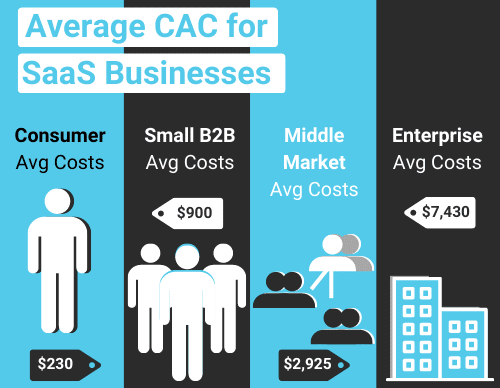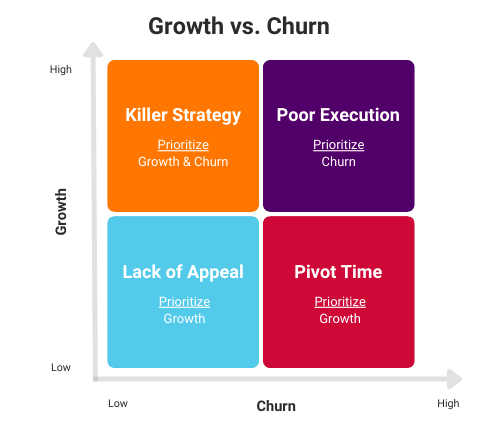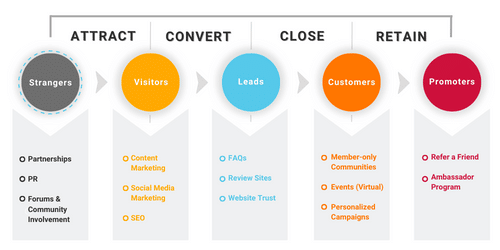SaaS marketing is more than just technicalities.
It is a complex and multifaceted process that requires a deep understanding of the target audience, the product or service being marketed, and the competitive landscape.
It also requires a strong understanding of marketing principles and strategies, as well as the ability to execute those strategies effectively.
While there are certainly some technical aspects to SaaS marketing, such as website development and optimization, email marketing, and social media marketing, these are just a few of the many components that make up a successful SaaS marketing campaign.
At the end of the day, SaaS marketing is about more than just technicalities. It’s about understanding the customer and delivering a message that resonates with them. It’s about creating a compelling offer that solves a problem or meets a need. And it’s about building relationships with customers and prospects that will lead to long-term success.
Because of this, it is crucially important to follow the performance of your marketing efforts through key performance indicators (KPIs) for software and SaaS marketing.
In today’s article, we are going to be going over why data and analytics are so important in the competitive SaaS and tech market, along with the top SaaS KPIs for software companies.
TL;DR
Don’t have time to read the full article? Check out this super short video recap about how to determine the best SaaS KPIs for your marketing team.
The Importance of Data-Driven Decision-Making in Software Marketing
Being a full-fledged software company, your key performance indicators (KPIs) for marketing must be synchronized with the goals of your business to truly matter.
And in this section, we will be exploring in more depth how data-driven decision-making and SaaS KPIs that are aligned with company goals can help enhance your business’s marketing efforts and strategies.
Defining the Marketing Objectives for SaaS and Software Companies
Before you can accurately establish which SaaS KPIs your team should be tracking, it is important to identify the most productive marketing objective for your company.
And while every software business is different, here are some key aspects of defining marketing objectives:
- Establishing Market Positioning: Marketing objectives should aim to communicate your differentiation to your target audience effectively.
- Generating Brand Awareness: Building brand awareness is crucial, especially for startups and emerging software companies. The objective here is to increase your brand recognition and visibility in the target market.
- Lead Generation: Especially for software businesses, marketing objectives should focus on strategies to attract and capture potential customers’ interest and generate high-quality leads.
- Customer Acquisition: Outline how the company plans to convert leads into paying customers in order to drive customer acquisition.
- Customer Retention and Engagement: Marketing objectives should include initiatives to enhance customer loyalty, foster long-term relationships, and keep existing customers satisfied.
- Product Launch and Adoption: When introducing new software or SaaS products, marketing objectives should focus on generating excitement, educating potential users, and driving early adoption.
- Market Expansion and Growth: For established software companies, the focus may be on expanding into new markets or industries. Marketing objectives should outline strategies to penetrate these new segments successfully.
- Competitive Differentiation: In competitive markets, marketing objectives should emphasize ways to highlight the software’s unique features and advantages over rival products.
Importance of Data and Analytics in a Competitive Market
In today’s fiercely competitive software and SaaS landscape, data has become an invaluable asset for businesses seeking to gain a competitive edge.
With an overwhelming abundance of information available, data-driven decision-making has emerged as a game-changer for software marketers. Leveraging data and analytics effectively allows companies to make strategic and informed choices that optimize their marketing efforts and drive overall success.
- Enhanced Understanding of Customer Behavior: Data-driven decision-making empowers software and SaaS companies to gain deeper insights into their target audience and optimize the SaaS KPIs that they track.
- Personalization and Customer Segmentation: In a market that is increasingly moving towards personalization, data-driven decision-making enables software marketers to segment their customer base effectively.
- Agile Decision-Making and Adaptation: With a constant influx of real-time data, software marketers can adopt an agile approach to decision-making. They can monitor SaaS KPIs regularly, quickly identify emerging trends or potential issues, and promptly adjust their marketing strategies.
- Optimizing Marketing Campaigns and Experiments: Data-driven decision-making also enables software companies to conduct well-informed marketing experiments, resulting in higher conversion rates and improved overall marketing performance.
Linking KPIs to Business Outcomes and ROI
KPIs, or key performance indicators, are quantifiable metrics that measure the success of marketing efforts. These metrics can help SaaS companies track progress, identify areas for improvement, and make data-driven decisions.
SaaS KPIs serve as the bridge between marketing efforts and tangible business outcomes.
While tracking metrics is essential, it is equally crucial to align these metrics with the broader business goals and objectives.
Linking your SaaS KPIs to business outcomes and ROI will provide your software company with a clear understanding of the direct impact of your marketing efforts on the company’s bottom line.
Defining SaaS KPIs that align with specific marketing objectives helps in driving desired business outcomes.
Also by analyzing KPIs alongside financial data, your business can calculate the return on your marketing investment accurately. This analysis provides insights into the most effective marketing strategies and ensures that resources are allocated to high-impact initiatives.
And when you link key metrics to business outcomes, you will simultaneously enhance the reliability of data-driven decision-making. Your marketers can identify which strategies are contributing most significantly to revenue generation and customer growth. As a result, they can make informed choices about where to invest their marketing resources to maximize the impact on the business’s overall success.
How SaaS KPIs Can Help Scale Software Marketing
While we will go over specific SaaS KPIs later in the article, by tracking these metrics your SaaS company can get a clearer picture of how your marketing is performing and make necessary adjustments to improve results.
Data-driven decision-making and the strategic use of SaaS KPIs are pivotal in the success of software and SaaS marketing.
High-level KPIs are concerned with the overall performance of a company, while low-level KPIs are used to track the performance of individual departments or processes, such as sales, marketing, human resources, and support.
Marketing KPIs specific for software of SaaS marketing often include metrics like the number of demos, free trials, or freemium accounts that are later upgraded to paid versions. Overall, this information is extremely useful for marketing teams to determine what’s working and what needs to be improved.
Embracing data analytics not only enables your company to understand your customers better but also empowers you to make informed marketing decisions that directly boost your bottom line.
KPIs are an essential part of any successful SaaS marketing strategy. And by using them effectively, SaaS companies can drive growth and achieve their business goals.
Top SaaS KPIs for Software Companies
Below we have compiled a list of the top SaaS KPIs to track at your software company as well as why they are important to monitor.
Keep in mind that because every company is different, the individual metrics that you should be tracking in order to achieve company objectives might vary slightly from the list below.
Customer Acquisition Cost (CAC)
Customer acquisition cost (CAC) measures the average cost to acquire a new customer. It includes all marketing and sales expenses divided by the number of new customers acquired within a specific period. A lower CAC indicates efficient customer acquisition strategies.
This metric is absolutely critical when it comes to measuring the performance of your SaaS marketing efforts. The goal of B2B SaaS marketing is ultimately to acquire customers at a cost that is lower than the lifetime value of those customers.
CAC comprises all your sales and marketing costs incurred to gain these customers. It also indicates how long it will take to recover the cost initially incurred to acquire these new customers.
The CAC is calculated by dividing all your sales and marketing expenses by the number of new customers acquired.

Once done with the calculation, your company can use this SaaS KPI metric to analyze your sales and marketing tactics.
A deep understanding of CAC can help improve a company’s marketing return on profitability and investment. And it is important to note that the higher the CAC, the longer it will take for your SaaS business to become profitable. Therefore, B2B SaaS businesses should focus on reducing their CACs and strive towards increasing their return on investment through effective marketing strategies.
It is important to note that the higher the CAC, the longer it will take for your SaaS business to become profitable. Therefore, b2b SaaS businesses should focus on reducing their CACs and strive towards increasing their return on investment through effective marketing strategies.
Customer Churn Rate
The churn rate calculates the percentage of customers who stop using the SaaS product during a given period. It reflects customer dissatisfaction or disengagement. A lower churn rate signifies better customer retention and product satisfaction.
In essence, churn rate is the essence of understanding SaaS KPIs for software marketing.
Any sort of churn helps your software company understand if your software is providing value to the customers and is still desired by them: if all is going well the churn rate of your SaaS business shouldn’t be high.

Using churn rate as a SaaS KPI in your marketing, your software business can easily project its future growth and profitability.
Being a SaaS company, nothing matters more than retaining your customers and acquiring new ones.
Using churn rate as a marketing KPI, you can analyze your weakness and work on them to both decrease the amount of churn your software company is getting and increase revenue. After all, retaining customers costs you less than acquiring new ones.
Customer Lifetime Value
Customer Lifetime Value (CLV) estimates the total value a customer brings to the SaaS company over their entire lifespan as a customer. It helps determine if the cost of acquiring and retaining customers is justified by their long-term value.
The customer lifetime value is the measurement of revenue a user brings in over the customer lifecycle. Companies should track their LTV for different sets of customers, such as those acquired through different channels, in order to understand the effectiveness of each marketing channel. The LTV calculation also takes into account several other SaaS KPIs:
- Cost of Acquisition (CAC)
- Average Revenue per User (ARPU)
- Retention Rate
By taking these three metrics into consideration, SaaS marketers are able to determine what kind of ROI they are getting from their marketing campaigns. They can then use this information to make better decisions going forward and be more strategic when it comes to the company’s marketing spend.
You can also find new ways to acquire additional revenue like giving offers for features that current users can upgrade their plan to gain access to.
While it’s important to acquire new customers, your current customers are vital to your business growth as well. You always want to keep thinking of new ideas to enhance the customer experience. This will naturally increase your LTV.
Additionally, it costs up to 7 times more to acquire a new customer than it does to keep an existing one. So make sure you’re nurturing the users you have and ensure they get the best experience possible.
Monthly Recurring Revenue
Monthly Recurring Revenue, or MRR, tracks the predictable revenue generated from monthly subscriptions. It provides a clear view of the company’s revenue stream and growth rate. Steady MRR growth indicates a healthy SaaS business.
The previous SaaS KPIs we’ve mentioned go hand in hand with this. Knowing your average customer lifetime value (CLV) and customer acquisition cost (CAC) ratios for your company are important KPIs that affect MRR.
Understanding how to effectively track these will help you understand your overall business health. Your main goal should be to increase MRR through customer retention initiatives that churn out lower CACs while maintaining a healthy CLV.
In order to have a healthy MRR, you have to provide a strong customer experience. This is a common theme with most of the SaaS KPIs we’ve gone through.
Customers are at the core of everything you do. When you make any marketing decisions for your business, they should be at the top of your mind. If you do this, then you should be able to generate a significant monthly recurring revenue.
At Insivia, we have a specialized methodology that nurtures FrictionlessMRR. This platform helps marketers streamline user acquisition, branding, and other marketing efforts for scalable recurring revenue.
Activation Rate
Activation rate is another key SaaS KPI for software companies, as it measures how many customers are actually using the product and getting value from it. A high activation rate indicates that the company has done a good job of onboarding customers and making the product easy to use.
There are a number of factors that can affect the activation rate, such as the complexity of the product, the quality of the onboarding process, and the marketing and sales efforts.
Companies can track activation rates to see how well they are doing at getting customers to use their product and to identify areas where they can improve.
Here are some tips for improving the activation rate:
- Make sure the product is easy to use and understand.
- Provide clear and concise documentation and support.
- Offer a free trial or demo so customers can try the product before they buy it.
- Create an onboarding process that is tailored to the needs of your customers.
- Track the activation rate and identify areas where you can improve.
Overall, activation rate is an important SaaS KPI for SaaS marketers because it measures how well a company is onboarding new customers and getting them to use its product. A high activation rate indicates that a company is providing a valuable product that customers are using effectively, while a low activation rate suggests that the company needs to improve its onboarding process or its product.
Free Trial Conversion Rate
This SaaS KPI tracks the percentage of free trial users who become paying customers. A higher conversion rate indicates that the free trial is more effective in persuading users to become customers. This could be due to a number of factors, such as the quality of the product, the ease of use, or the value of the free trial.
A high conversion rate is a good sign for your SaaS company, as it indicates that you are attracting and retaining customers. However, it is important to note that not all free trials are created equal. Some free trials may be more effective than others, depending on the quality of the product, the ease of use, the value of the free trial, or the market.
It is important to track this KPI to see how well your free trial is performing and to make changes as needed.
Here are some tips for increasing your free trial conversion rate:
- Make sure your product is high quality and meets the needs of your target audience.
- Make it easy for users to sign up for a free trial.
- Offer a generous free trial period.
- Provide excellent customer support during the free trial period.
- Promote your free trial through social media, email marketing, and other channels.
- Track your conversion rate and make changes as needed.
Customer Engagement Metrics
These SaaS KPIs include things like Daily Active Users (DAU), Monthly Active Users (MAU), and Time on Site measure user engagement with the SaaS platform. High engagement rates indicate a sticky and valuable product.
Customer engagement metrics are used to measure how users interact with your SaaS platform or website.
DAU is the number of unique users who use the platform on a given day, MAU is the number of unique users who use the platform in a given month, and Time on Site is the average amount of time that users spend on the platform.
Each of these metrics can be used to track user growth, identify areas where users are struggling, and make changes to improve the user experience. By tracking customer engagement, SaaS companies can ensure that they are providing a valuable product that meets the needs of their users.
Customer Support Response Time
This KPI measures the time taken by the customer support team to respond to customer inquiries or tickets. A shorter response time is critical for ensuring customer satisfaction and resolving issues promptly.
In every part of the marketing or sales process, speed is important.
An article about how speed can drastically improve the sales cycle, states that speed and efficiency are vitally important because they will set you apart from the competition.
Tracking this SaaS KPI can be incredibly beneficial at helping your marketing team monitor customer engagement based on response times and pinpoint areas of improvement.
Average Revenue Per User
Average Revenue per User, or ARPU, calculates the average revenue generated from each individual customer. It helps identify high-value customers and highlights opportunities for upselling and cross-selling.
One way to analyze your SaaS marketing efforts is by using ARPU as marketing KPIs. ARPU is one of the most critical metrics in determining revenue from SaaS subscription businesses. And if you offer subscription based pricing, it also considers how many free software users have upgraded their accounts to a paid version.
This SaaS marketing metric helps your software business analyze its future growth and model their revenue-making capacity. To calculate ARPU, all you need to do is divide your total revenue by the average users in a period.
For use as a SaaS marketing KPI, the ARPU of your software business should constantly be increasing. This is indicative that your sales and marketing value propositions are getting better, that you are targeting the right audience for your SaaS, and that your services are living up to your customers’ needs.
When you understand the trends in customer revenue, you can easily identify which marketing tactics are working best for you so that you can focus on those and adjust your strategy accordingly. By keeping track of ARPU, your SaaS business will be able to create a long-term plan that helps you remain competitive while also generating higher profits.
Net Promoter Score
Net Promoter Score (NPS) is a metric that gauges customer satisfaction and loyalty. It asks customers to rate how likely they are to recommend the SaaS product to others. A high NPS indicates a strong and satisfied customer base.

The last of these SaaS KPIs is important because it drives customer loyalty and provides insight into how your customers view their experiences with your product. The higher the NPS score, the more satisfied your customers are. As you can imagine, having a loyal customer base is extremely beneficial as they will be more likely to continue using and recommend your service/product.
Taking this data into consideration will help you significantly save money for your marketing budget and hone in on what’s working to boost customer satisfaction.
Key Takeaways
Monitoring and optimizing these SaaS KPIs for software marketers provides valuable insights into the company’s performance, customer satisfaction, and growth potential. They enable data-driven decision-making to drive success in the competitive SaaS market.
Overall, your marketing team needs to keep these KPIs in mind when planning your business’s digital marketing strategy. If you go into your initiatives blind without any KPIs, you won’t be able to expand upon your customer base effectively. You also won’t generate as many qualified leads and you’ll lose relevant visibility of your business. When you take this useful data into account, you’ll notice a decrease in customer churn rate and an increase in new customers.
To learn more about how you can scale your SaaS marketing efforts, reach out to us today!
Written by: Tony Zayas, Chief Revenue Officer
In my role as Chief Revenue Officer at Insivia, I am at the forefront of driving transformation and results for SaaS and technology companies. I lead strategic marketing and business development initiatives, helping businesses overcome plateaus and achieve significant growth. My journey has led me to collaborate with leading businesses and apply my knowledge to revolutionize industries.
